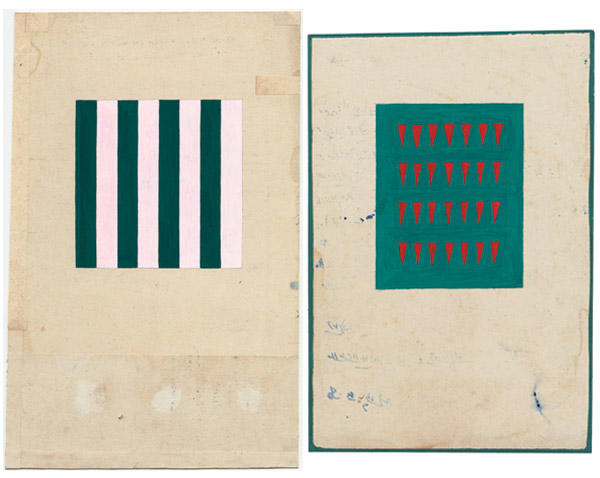Rob Leeming talks to French poet Franck André Jamme about Tantra Song, a collection of surprisingly modern Tantric paintings

With our modern eloquence, our technology and our brash and inventive culture, contemporary artists have developed individual ways of expressing hopes, beliefs, doubts and fears through art. Yet magically, when arts and crafts are brought together from across the world — from cultures and nations completely separate from one-another — unlikely bonds emerge, suggesting a common human struggle for expression and the existence of a “world art.”
An excellent example of this can be seen in Tantra Song, a new book compiled by one of France’s leading contemporary poets, Franck André Jamme.
“They see time and day and night very naturally, they think of two stripes, black and white”
The book features Tantric paintings created by Tantrika families from Rajasthan, India, works tracked down by the author after many visits to the country over the last thirty years. The pictures themselves are born out of the ancient traditions of Tantric Hinduism and have resonated with modern readers, struck by their uncanny similarities to Western modern art, particularly their expression of meaning through simple forms.
The pictures are often joyful: filled with colour, they are both hypnotic and sensual, their simple geometry elegant yet immediate. Produced upon recycled paper, the paintings feature divine and religious diagrams and representations of deities and mystic forces, which are used to meditate upon and to help believers visualize the deity they portray. White arrows dancing and fizzing across a deep turquoise square represents energy, whilst colour filled wheels contain the shades of the Earth. There are fiery triangles atop a tropical shade of blue — the tongue of the goddess Kali in duplicate — the repetition supposedly inducing true intoxication.
Jamme quickly recognized the simple logic of the Tantrika craftsmen: “they see time and day and night very naturally, they think of two stripes, black and white.”
“There are a lot of small rules with this kind of Tantric painting” Jamme adds, “but they respect colour: if they want to express consciousness, they are going to use light blue; they are not going to put red”. This favoring of colour over stipulation is indicative of Tantra, which isoften looked upon with scorn by traditional Hindus who’s own religion is comprised of complicated rules and regulation. In comparison, Tantrism embraces freedom, personal liberty, and gender equality. “Traditional Hindus are skeptical and a bit afraid of this,” explains Jamme, because “Tantrism can sound a little bit devilish to them — there is so much freedom. They’re afraid of freedom. — is the standard for humanity.”
Returning to France from India with the artwork and a better understanding of its meaning, Jamme exhibited the paintings as part of Magiciens de la Terre (Magicians of the Earth) exhibition held at the Pompidou Centre in 1989. The display brought together contemporary art from across the world in an attempt to answer the question “Is there such a thing as a common
world art?”
“Just think of yodelers in Switzerland — you have exactly the same thing in the North of Vietnam”
Jamme considers the answer to that question to be yes; the evidence lies not only in the distinct similarities between Tantric painting and our own contemporary art but in the art and culture of eras past.
“In Orissa, India” Jamme adds, “ found a particular form of poetry from the Medieval times which is extremely close in form to Haiku poetry from Japan — very short pieces with the very same number of syllables. That’s fascinating! I think there is a collective, hidden human search for expression” Jamme explains seriously, “just think of yodelers in Switzerland — you have exactly the same thing in the North of Vietnam.”
The principal force driving this search is freedom of expression, something embodied by the Tantrika craftsmen who harbour a “mad and pure desire for mental elevation.

They’ll think of any way, any manner, any practice to reach that goal, beyond many of the rules and regulations of their rite — if not all.”These Tantric paintings are the colourful, disciplined result of concentration combining with freedom, beautiful to look at, yet also — to those who believe — an attempt to, “assemble almost everything,
in almost nothing.”Tantra Song, collected and with writing by Franck André Jamme is available through Siglio Press




